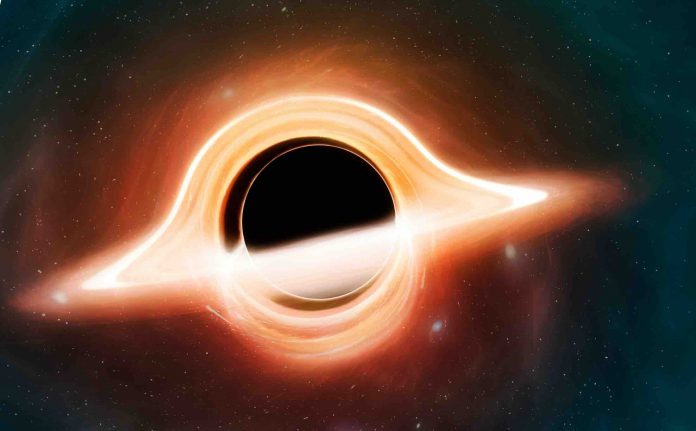In 1916, Albert Einstein put the finishing touches on his Theory of General Relativity, a journey that began in 1905 with his attempts to reconcile Newton’s own theories of gravitation with the laws of electromagnetism. Once complete, Einstein’s theory provided a unified description of gravity as a geometric property of the cosmos, where massive objects alter the curvature of spacetime, affecting everything around them.
What’s more, Einstein’s field equations predicted the existence of black holes, objects so massive that even light cannot escape their surfaces. GR also predicts that black holes will bend light in their vicinity, an effect that can be used by astronomers to observe more distant objects. Relying on this technique, an international team of scientists made an unprecedented feat by observing light caused by an X-ray flare that took place behind a black hole.
The team was led by Dr. Dan Wilkins, an astrophysicist with the Kavli Institute for Particle Astrophysics and Cosmology at Stanford University and a NASA Einstein Fellow. He was joined by researchers from Saint Mary’s University in Halifax, Nova Scotia; the Institute for Gravitation and the Cosmos at The Pennsylvania State University, and the SRON Netherlands Institute for Space Research.
Using the ESA’s XMM-Newton and NASA’s NuSTAR space telescopes, Wilkins and his team observed bright X-ray flares coming from around a supermassive black hole (SMBH) located at the center of I Zwicky 1 – a spiral galaxy located 1,800 light-years from Earth. Astronomers were not expecting to see this, but because of the SMBH’s extreme gravity (which comes from 10 million Solar masses), flares from behind it were made visible to the XMM-Newton and NuSTAR.
The discovery was made in the course of a survey designed to learn more about the bright and mysterious X-ray light that surrounds a black hole’s event horizon. This “corona” (as its nicknamed) is thought to be the result of gas that falls continuously into the black hole and forms a spinning disk around it. As the ring is accelerated to near the speed of light, it is heated to millions of degrees and generated magnetic fields that get twisted into knots.
Eventually, these fields get twisted up to the point that they snap and release all the energy they have stored within. This energy is then transferred to matter in the surrounding disk, which produces the “corona” of high-energy X-ray electrons. The X-ray flares were first visible to Wilkins and his team as light echoes, which were reflected from infalling gas particles being accreted onto the face of the black hole.
In this case, the X-ray flare observed was so bright that some of the X-rays shone down onto the disk of gas falling into the black hole. As the flares subsided, the telescopes picked up fainter flashes, which were the echoes of the flares bouncing off the gas behind the black hole. The light from these flashes was bent around by the black hole’s intense gravity and became visible to the telescopes, though with a slight delay.
The team was able to discern where the X-ray flashes came from based on the specific “colors” of light (their specific wavelength) they emitted. The colors of the X-rays that came from the far side of the black hole were slightly altered by the extreme gravitational environment. Add to that the fact that X-ray echoes are seen at different times depending on where on the disk they were reflected from, they contain a lot of information about what is happening around a black hole.
As a result, these observations not only confirmed behavior predicted by General Relativity, they also allowed the team to study processes taking place behind a black hole for the first time. In the near future, Wilkins and his team want to use this technique to create a 3D map of the black hole surroundings and to investigate other black hole mysteries. For instance, Wilkins and his colleagues want to solve the mystery of how the corona produced such bright X-ray flares.
These missions will continue to rely on the XMM-Newton space telescope, as well as the ESA’s proposed next-generation X-ray observatory, known as the Advanced Telescope for High-ENergy Astrophysics (ATHENA). These and other space telescopes that are scheduled to launch in the coming years promise to reveal a great deal more about the parts of the Universe we cannot see, and to shed more light on its many mysteries.





























